
After collecting my favourite albums on good old, 16-bit, 44.1kHz, uncompressed, compact discs, I want to treat myself to a nice set of speakers that'll play the music I love as close as possible to what the artist who made that music wants me to hear it.
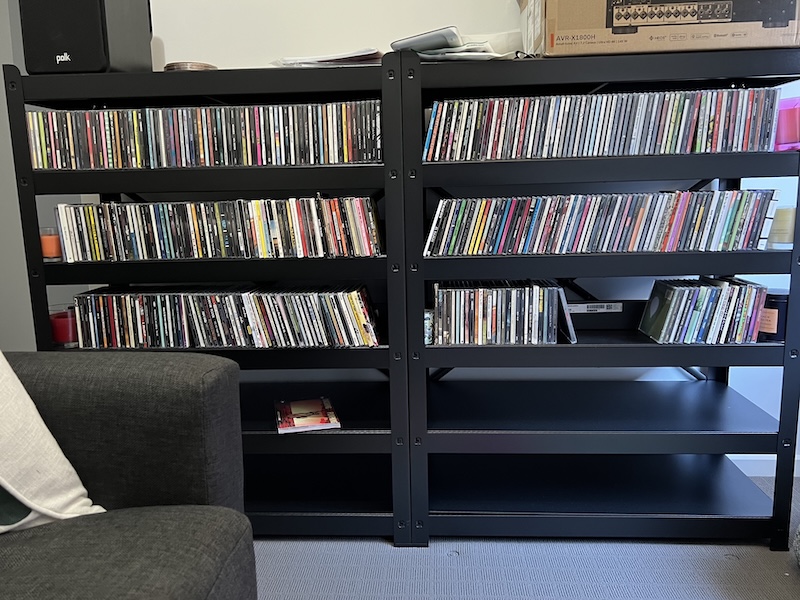
Listening to these CDs on my current setup (Polk S10 bookshelf speakers, Richter Krakatoa subwoofer & Loxjie A30 integrated amplifier & DAC) got me wondering if what I'm hearing really is Jack White's beautiful guitar tone as he painstaking designed it? Am I getting the full glorious audio picture that Bjork worked so hard to create? Are those bleeps and boops in Kid A what Thom Yorke agonised over or is it a muddy mess that sounds nothing like what he intended?
That's what I'm aiming for with what could be the most expensive thing I ever buy except for a car and house. Unfortunately for me, I have no idea what I'm doing. This post is me learning as I go about what makes a "good speaker".
Humans can hear down to 20Hz and up to 20kHz. That doesn't mean most music has all those frequencies in it, but a good speaker setup will be able to reproduce all the frequencies in that range. Have a listen to this:
Personally, I want a speaker as close to neutral as I can afford. There's loads of audiophile terms like fatigue, crispness, warmth, tonality, clean and so on to describe sound, but essentially I don't want to hear a speaker designer's idea of what the music I listen to should sound like. I want to hear the what artist and producer of the music I'm listening to want me to hear.
This is called a "flat response", or "transparent". No frequency exaggerated or diminished either due to a design fault in the speaker or a decision by a speaker manufacturer.
To sum up - a good speaker for me is one that has a flat frequency response as possible all the way from 20Hz to 20kHz.
Audio engineers are also after a flat response as they want to hear the instruments and vocals just as it was recorded. Monitor speakers are designed with this in mind and try their best to achieve a flat frequency response.
Flat is not how most people like to listen to music, so the common knowledge is that unless you're producing music, don't get monitor speakers for general music listening, but that's old and often incorrect advice. Monitor speakers can be great and bad, just like any other speaker. There's no right or wrong when it comes to speakers. Listen to whatever you like! But me, I want that flatness and allow the music reveal itself. That's the theory at least.
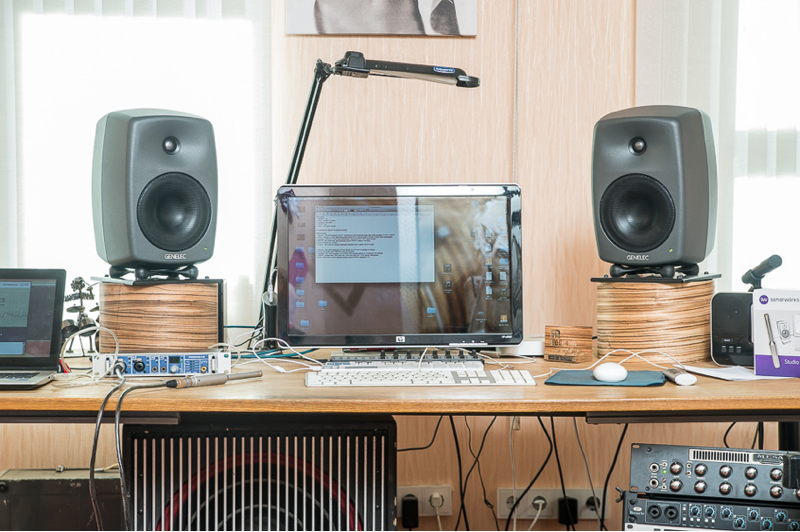
Another benefit of monitor speakers are that they're designed to be listened to close (aka near-field) which is good for me as they'll be used on a computer desk where I'm sitting ~60cm away from them and have built-in amplifiers - one less thing you need to decide on. Someone's already done that hard work for you.
Golden ears, $5,000 cables, $100,000 speakers, tube amps and so on are the domain of audiophile wankers from the 90s. Some people enjoy it and good luck to them, but there is absolutely a point of diminishing returns with audio gear.
Sites like Audio Science Review, Erin's Audio Corner and No Audiophile dissolve the snake oil that's so rampant in this industry to give you hard data on these products. I have very little idea what that data means, but they have shitloads of it and more importantly, people with way more knowledge than me interpret it and provide recommendations.
Here's a site that takes all the measurement data and lets you compare them to one another. Look at this comparison of the Genelec 8030C vs the JBL 306P MKII:
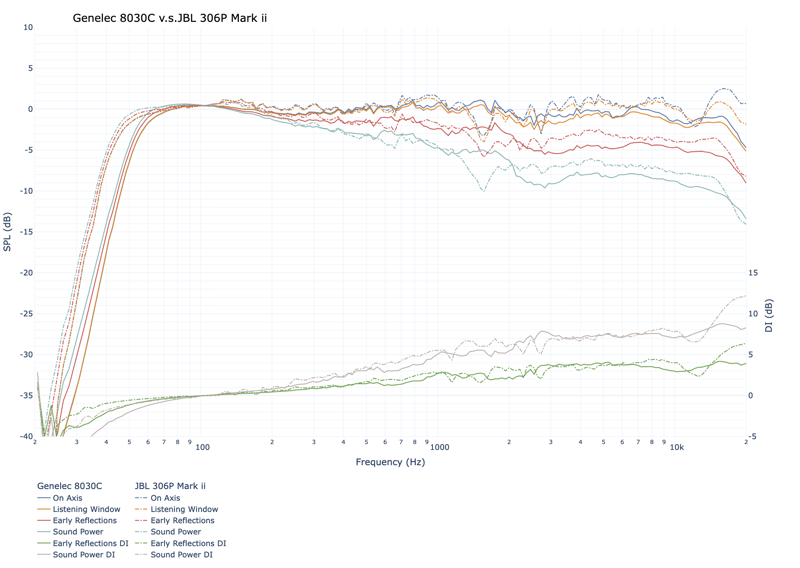
I don't quite know how to read it properly, but I think you want the "listening window" line to be as flat as possible around the 0db mark. The solid line is the $1000 Genelec and the dotted yellow line is the $250 JBL. They're not that far apart, are they?
Someone else has taken that data and converted it to an "Olive" score using Sean Olive's "Multiple Regression Model for Predicting Loudspeaker Preference Using Objective Measurements" research paper (explained in this forum post), to give a number rating. They even put it on a chart aligned by price and score.
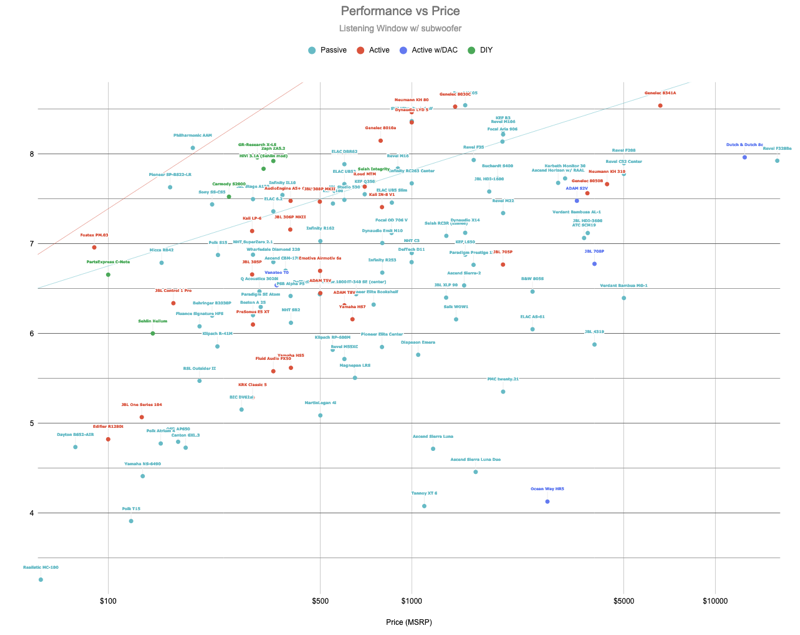
This rating number, based on Dr. Olive's research is as the main dude on the ASR Forum summarises, "a set of objective measurements with no notion of what humans like or don't like, is able to highly predict what we like in the sound of speakers!" - sounds impressive enough for me.
Going by that score, the top result ever is the Genelec 8030C when paired with a subwoofer. Combining the data from Audio Science Review with the research from Dr. Olive, the 8030C plus a subwoofer should be the most pleasant speaker to listen to music with.

It's good that this stuff exists as it helps point someone like me in the right direction as to what to buy. God bless these pedantic audio nerds!
Long story short - yeah, probably. I wanted to try and get away without a sub to avoid the setup and integration with the room (ugh), but if I wanna hear sounds down to 20Hz (and I do), then a subwoofer is non-negotiable. Just look at this chart of common musical instruments and how low they can go:
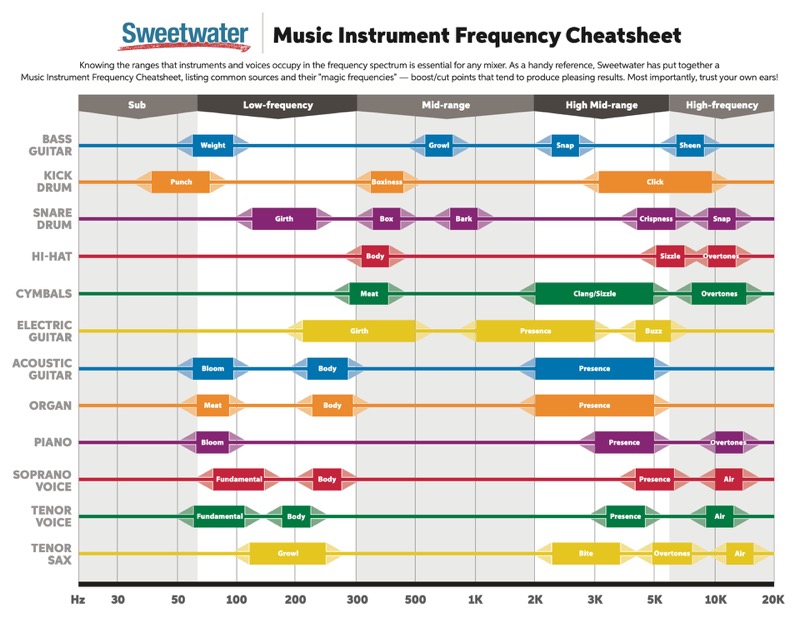
I've got a 10" subwoofer in my current setup and a 15" subwoofer in my home cinema. The difference they make is extremely noticeable. As if I'd be able to hear The Beastie Boys, Chemical Brothers, Jay-Z and dozens of other artists I enjoy at their best without a subwoofer. I was a fool for thinking I didn't need one.
Any subwoofer I get needs to be competent at 20Hz too, just getting down to 30Hz or 35Hz isn't enough. If I'm going to fuck around with a subwoofer I may as well get a proper one. It'll also ideally have balanced XLR inputs so I can connect a DAC directly to it and set an appropriate crossover on the subwoofer's amp. Some fancy subwoofer and monitor setups has "bass management systems" that work it all out for you automatically. That would be cool.
All my music is digital. Be it from a computer or from a CD, it's 1s and 0s that need to be turned into analog signals and that is the job of a DAC. Luckily this is a solved problem in 2022 - DACs with perfect conversion are now cheap and cheerful. Audio Science Review has dozens of DAC reviews and the Topping E70 seems to be the best bang for buck.
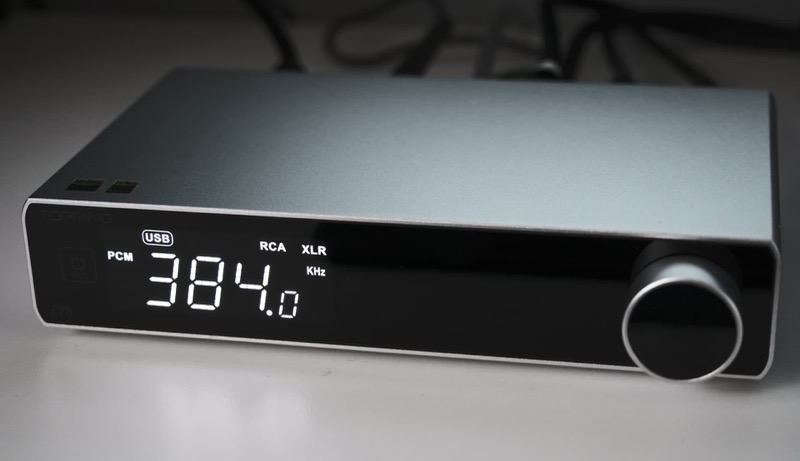
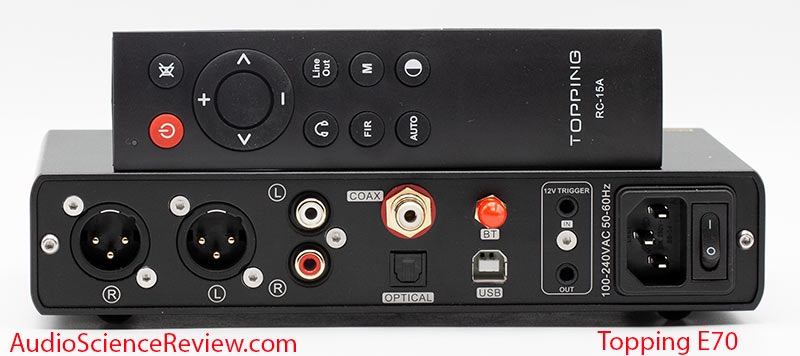
$525 locally, perfect digital to analog conversion with balanced output, and a plethora of inputs like USB/Optical/Coax and Bluetooth (AptX Adaptive & LDAC). It's also got a built-in power supply and a remote control for changing output signal (i.e: volume) and changing inputs.
I could spend around $1,200 and get a Topping D90LE - the DAC with the highest SINAD measurement on record at Audio Science Review - but the E70 is incredibly close and less than half the price. It's arguable nobody would even notice an audible difference.
Some fancy studio monitors have digital inputs, which means they have a DAC onboard and all I have to do is hook up my inputs directly to the speaker. Unfortunately most of the digital inputs are AES, which means I'd need to buy some sort of audio interface to go from USB on my computer or SPDIF on my CD player to AES. These things are not easy to find, nor are they cheap or come with remotes so I can switch inputs (Bluetooth, CD player, computer) easily. As nice as it would be to skip a separate DAC, it's just not practical for a non-studio setup.
Having a perfectly flat speaker in an anechoic chamber (where these speakers are tested and the charts generated) is one thing, but the room you're listening to the speaker in impacts the sound dramatically. Put the same speaker in two different rooms and they'll sound different.
To combat this you can fuck around with "treating" the room (sticking foam around the walls, more curtains, etc.) and you can use what is called "digital signal processing" (DSP) to alter the frequencies the speaker puts out so when they hit the walls and objects in the room, they come back to your ears sounding more like what you expect.
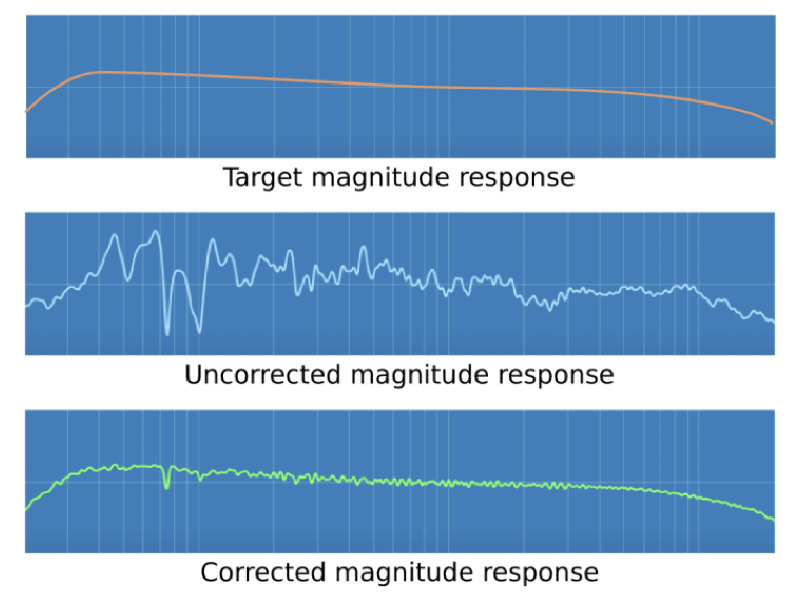
You get a calibrated microphone, hook it up to some software on a computer or on a dedicated piece of hardware, play some tones through your speakers and a fancy algorithm works out what you need to change. If you've ever set up a Sonos speaker and used the Trueplay feature or used a home theatre amp with Audyssey EQ, that's room correction.
There's multiple options out there - Dirac and Room EQ Wizard being the most popular on the software side. Some speaker brands have their own systems built-in to their products, like Genelc's GLM and Neumann's Automatic Monitor Alignment.
The most interesting however is the MiniDSP range of hardware and in particular is the MiniDSP Flex. The Flex is not only a DSP, it's also an excellent quality DAC with balanced output. It supports Bluetooth, coax/toslink and USB inputs. It's got Dirac Live support, which is one of the best auto-magic room correction algorithms and can do bass management - just plug any subwoofer (even if it doesn't have balanced input) in to one of the outputs.
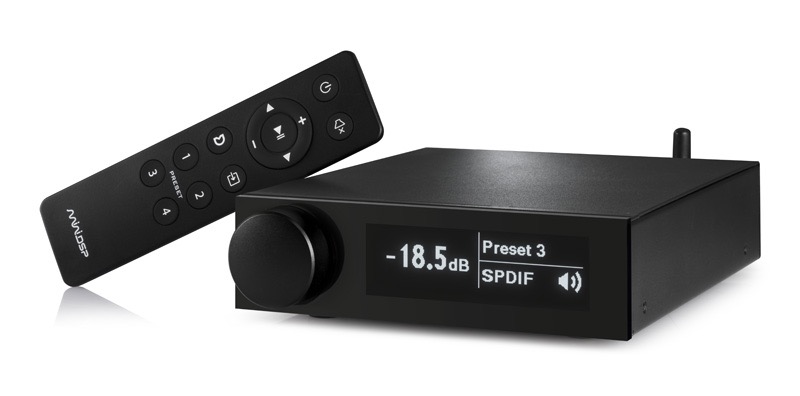
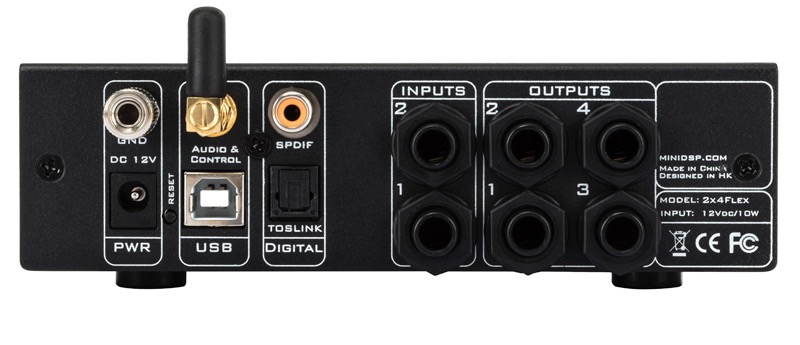
The Flex a very tidy setup, but has to be shipped from Hong Kong and has a total price of US$879 - almost A$1300 and I'm not sure if it'll get slugged with GST on import. It's pretty fucken good though.
A common problem noted in many reviews for monitor speakers is "tweeter hiss". It seems to be that if you're listening at around 1m or further away, you aren't going to hear the hiss. But if you're in a near-field situation, like me, with the speakers roughly 50cm-70cm away, it is audible. I'm sensitive to this kinda thing as my study is very quiet during the day (suburban living!) and there's no other background noise to mask it. Not all monitor speakers do it at a level that's audible, but it's certainly a thing to be aware of.
The Genelec 8320A does double conversion of analog signals to apply the DSP/GLM settings. Analog signal out of Topping DAC into 7350A subwoofer gets converted to digital to apply the DSP settings, then changed to analog to be sent to the 8320A and the subwoofer itself. The 8320A then changes the analog signal into digital at the DSP, then back again. Neumann does this too. The Genelec 8330A doesn't do this (keeps the entire signal chain digital), but costs a fair bit more than the 8320A.
I also learned that practically every DSP system does its thing at 48kHz, so if you feed the Genelecs or Neumanns a 96kHz signal (from Apple Music or Tidal for example), it's resampled to 48Khz. Apparently this is done transparently and you can't tell. There might be DSPs out there that don't do this, I dunno. The improvements a DSP bring vastly outweigh the difference between 96kHz and 44.1kHz and most of my music is 44.1kHz - but when I play 96kHz music it would be nice to know it hasn't been resampled down.
The Onkyo TX-NR7100 AVR, which sells for "only" $1695 has full Dirac Live room correction built-in. A tempting choice considering its feature set, easy availability locally and the broad range of passive speakers available 2nd hand. The amplifier and DAC are nothing special, but they're transparent enough not to make any discernable audible difference. The differences mostly show up on measurements only.
There's also a NAD C638 digital streamer box thingy that outputs balanced XLR (so perfect for a pair of active monitors) and also had Dirac Live built in. There's one for sale in Melbourne for ~$1500. The MiniDSP Flex is cheaper (and arguably has a better DAC)
I'm tempted to just buy a cheap pair of used monitors (like the JBL 305, or some Adam/KRK) and just see what the hiss is like for myself. Maybe it's not that bad! If I can't hear it this is a super cheap option. $300 for the monitors, $1350 for the MiniDSP and I keep using my half-decent subwoofer. If I can hear the hissing, flog em off to someone else.
My listening area kinda sucks. It's a small room (3m x 3.5m) which is apparently bad for subwoofers/bass. It's got a big window on the right and a built-in wardrobe on the left. At least the floor is carpet and there's a sofa, I guess.
Room correction can fix a lot of this - which is why a DSP is so important, even if it does cost a lot of money or requires a lot of fucking around with tweaks - but lining the walls with foam squares and adding bass traps isn't really an option.
Considering this, is it worth dropping big coin on speakers and placing them in a half-arsed room? Probably not.
If I wasn't such a cheapskate, I'd just go buy this stuff right now. Genelec's speakers are consistently the most accurate. The subwoofer is relatively compact and goes down low. Genelec's GLM is the best room correction. There's no need for a DAC as the entire signal chain is digital. The SMSL SD-9 has AES output and USB input and can act as a network audio player, volume control and has a remote.
The only issue is that damn price. It's "only" a month's work...
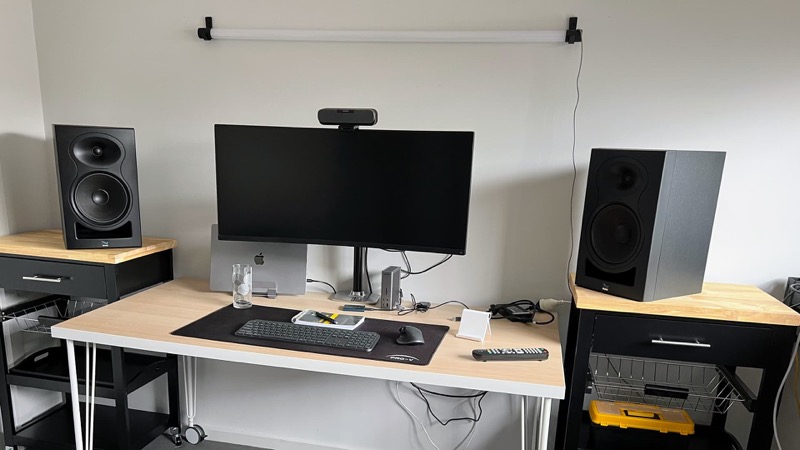
A pair of Kali LP-8 2nd Waves. They were well priced at $850 for the pair and had the best measured low end capability of any other monitor speakers besides Genelec. They give plenty of bass, so I was able to get rid of my subwoofer too. There's also less tweeter hiss than the JBL's. In a dead silent room I can barely hear it. In a normal listening situation (i.e: window open for fresh air, heating/cooling on, etc) any tweeter hiss is inaudible.
As for the sound from the Kali speakers after a week of listening? Fantastic. There's just so much more depth than the JBL's and subwoofer combo, while retaining all the higher stuff like cymbals and vocals. The measurements don't lie.
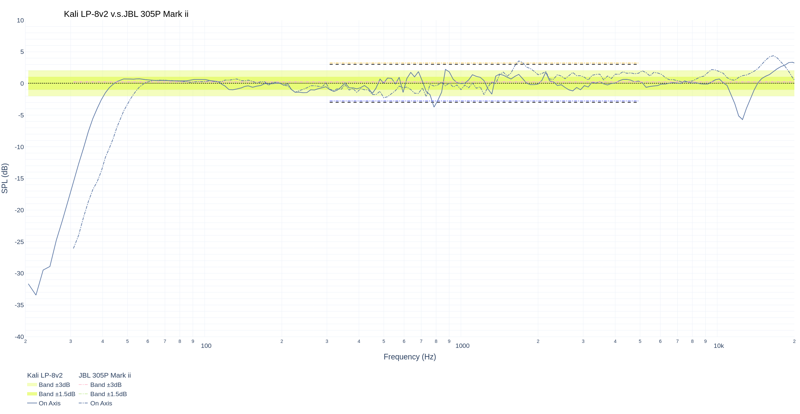
The only downside is that they're huge for nearfield listening and look pretty ugly. Luckily I'm more of a function over form person so can live with the visual awkwardness in my living areas considering the price and performance of the LP-8v2.
Those stands are just cheap ones off eBay. I don't particularly recommend them for big speakers like this as they wobble when I type and generally don't feel stable. They were better with the smaller JBL's though.
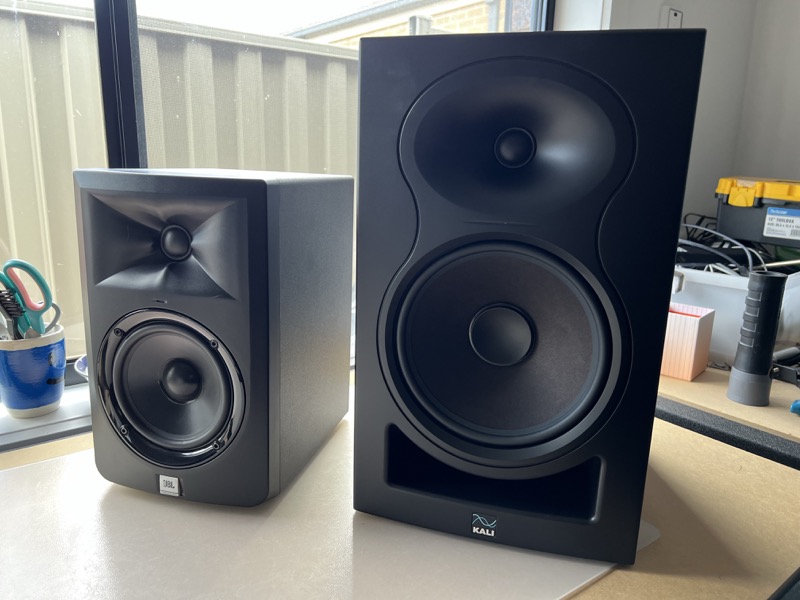
I've got them hooked up to a NAD C658 that I purchased off Facebook Marketplace for $1000. It's the cheapest way I'm going to try out Dirac Live even after spending an extra $150 to get the "full frequency" software upgrade from Dirac that allows you to tweak the entire 20Hz-20kHz range.
My first impressions are that the Dirac calibraton sounds better on than off, but it's not a massive difference and it's not the slam dunk I thought it would be and it isn't cheap. I'll do a few more calibrations, tweaking and listening. It's absolutely possible I'm not using Dirac properly. Overall I'm really happy with this setup. I spent almost $2,000 on it, but it is good and ideally, should last me a very long time.
